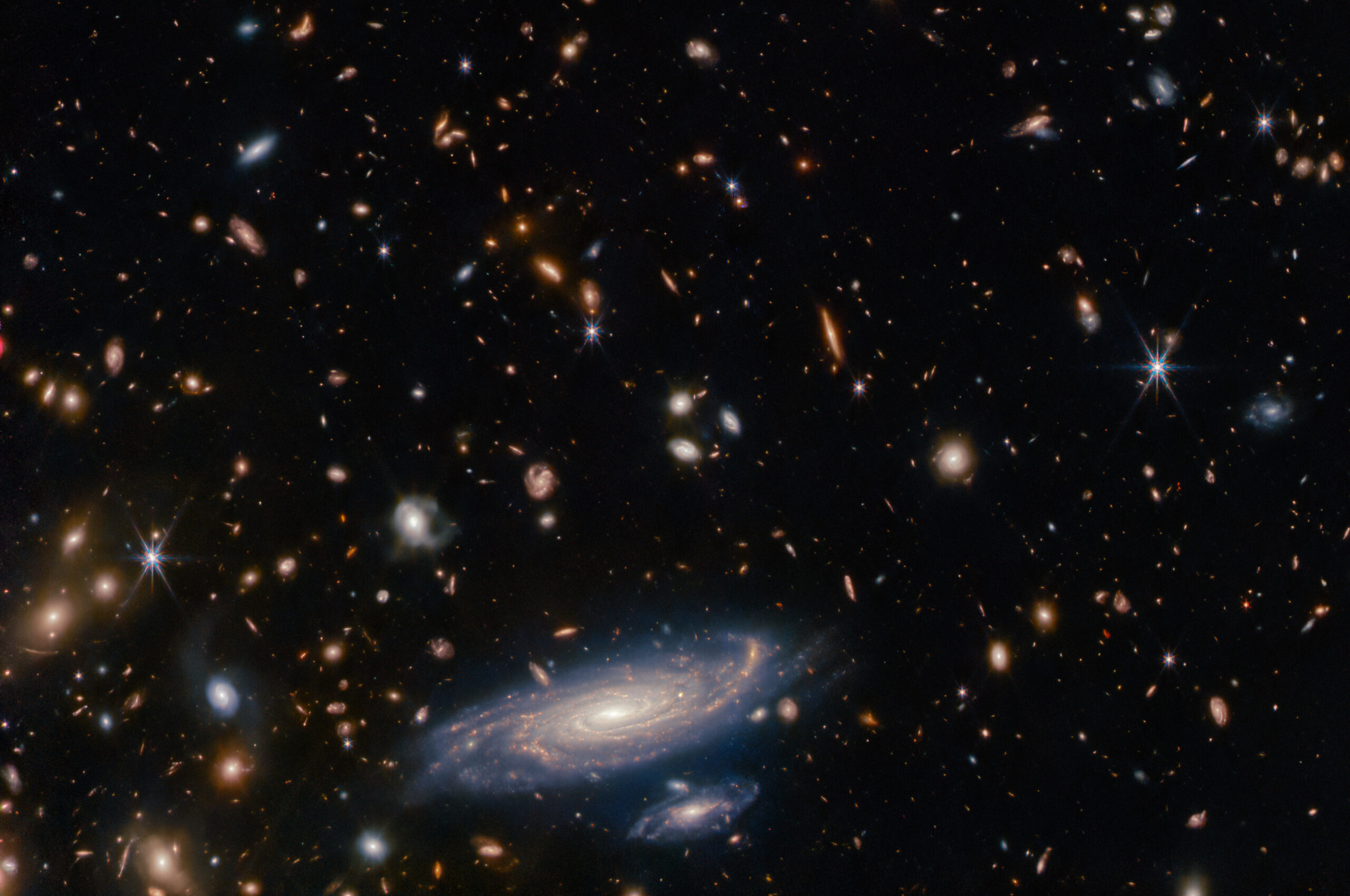Listed are all scientific papers resulting from an ISSI activity written or co-authored by ISSI Team members, Working Group members, Workshop participants, visitors or staff members.
The emission of volatiles from the surface and subsurface of planetary bodies can provide fundamental knowledge concerning their formation, evolution, and structure. There are a variety of physical processes that shape the structural, kinematic and thermal behavior of the released material.
We present a sample of 1956 individual stellar clumps at redshift $0.7lt zlt 10$, detected with JWST/NIRCam in 476 galaxies lensed by the galaxy cluster Abell2744. The lensed clumps present magnifications ranging between $mu$ = 1.8 and $mu$ = 300. We perform simultaneous size-photometry estimates in 20 JWST/NIRCam median and broad-band filters from 0.7 to 5 $mu$m. Spectral energy distribution (SED) fitting analyses enable us to recover the physical properties of the clumps.
One of the most striking manifestations of orderly behavior emerging out of complex interactions in any astrophysical system is the 11 yr cycle of sunspots. However, direct sunspot observations and reconstructions of long-term solar activity clearly exhibit amplitude fluctuations beyond the decadal timescale, which may be termed as supradecadal modulation.
Context. The localised formation of planetesimals can be triggered with the help of streaming instability when the local pebble density is high. This can happen at various locations in the disc, and it leads to the formation of local planetesimal rings. The planetesimals in these rings subsequently grow from mutual collisions and by pebble accretion. Aims.
Aims. We present ten solar energetic electron (SEE) events measured by Wind/3DP at ∼1 to 200 keV with a bump break in the electron peak flux versus energy spectrum. We examined their acceleration sources and/or processes at the Sun. Methods.
The terrestrial ring current consists of particles with energy from several keV to 100 s of keV, and its enhancement will result in magnetic field depression, known as geomagnetic storms. The ring current is mainly composed of H+, O+, He+, and electrons, and there has been a longstanding debate regarding their relative contributions. In this study, we employed a multi‐output convolutional neural network to predict the storm‐time ring current plasma pressures of these particles.
Context. Anomalous Cepheids (ACs) are pulsating variable stars, and are less studied compared to the well-known Classical Cepheids (CCs) and RR Lyrae stars. The ACs are metal poor ([Fe/H] < 1.5) and follow distinct period-luminosity (PL) and period-Wesenheit (PW) relations that can be used for distance measurements, and they can pulsate in the fundamental (F) and first overtone (1O) modes. Aims.
While modern thermal convection in rocky planets is controlled by a slow solid-state creep flow, the earliest stages of terrestrial planets likely experienced turbulent flow during which their silicate envelope was fully molten, usually called magma ocean.
This study investigates the evolution of two polar cap airglow patches, AGP1 and AGP2, observed over Resolute Bay in northern Canada. AGP1 exhibited stable shape, followed the ExB drift patterns and maintained high electron density as it transited toward the auroral oval, sustaining the maximum F-region density and redline emissions by a downward vertical drift.
Using 2D numerical subduction models, we compare the morphology of deep slabs in the presence of an oceanic or continental overriding plate and viscosity jumps at either 660 km or 1,000 km depth as suggested by the latest geoid inversions. We demonstrate that a continental plate, combined with a 1,000 km depth viscosity increase, promotes slab penetration into the lower mantle.
